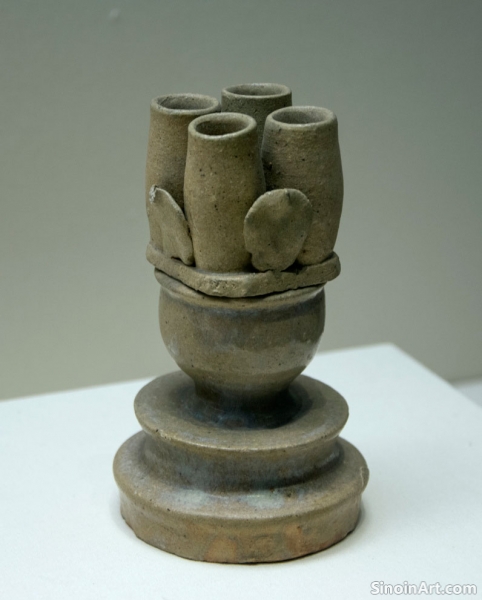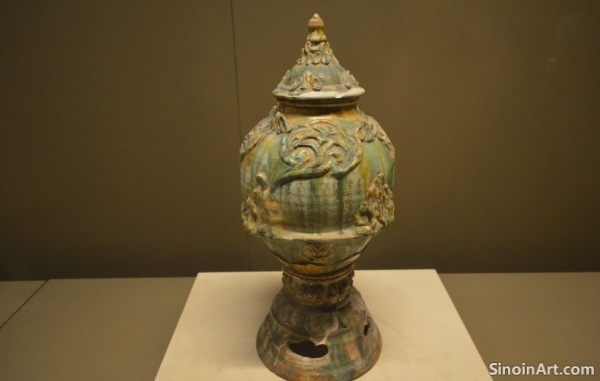Yue Ware Celadon: Subtle Elegance in Green
|
Yue ware is a highly regarded form of celadon produced in the Zhejiang province during the Tang Dynasty. These pieces are characterized by their subtle green glazes, their elegant forms, and their fine, smooth bodies. Yue ware celadon is a more understated style than the sancai pieces.  The glazes on Yue ware range in color from a pale grey-green to a deeper olive green. These colors are derived from the iron content of the clay and the controlled firing conditions. The subtlety of the glazing is a key characteristic of Yue wares.  Yue ware was produced in a variety of forms, including bowls, dishes, ewers, and vases, often inspired by shapes found in nature. The forms were often simple, elegant, and understated. The subtle elegance of the forms were an important part of their overall aesthetic.  Yue ware was not only used domestically but was also exported to other parts of Asia. Its beauty and elegance were widely appreciated, and it influenced the development of celadon production in other regions. Yue ware was a highly prized export item of the Tang Dynasty. The legacy of Yue ware lies in its quiet beauty, its technical sophistication, and its influence on later generations of ceramic artists. The influence of Yue ware can be seen throughout the Chinese and Asian ceramic traditions. These pieces remain highly valued by collectors today. |
Tag : Yue ware, Tang Dynasty celadon, Chinese ceramics, Green glaze, Celadon pottery
Related information
- The Role of Kilns in Tang Ceramic Production
- The Vibrant World of Tang Ceramics: An Overview
- Sancai Glazes: A Tang Dynasty Innovation
- The Dawn of Celadon Splendor
- Changsha Ware: Bold Designs and Painted Decoration
The advancements in kiln technology during the Tang Dynasty played a pivotal role in the transformation of Chinese ceramics. Kilns are the heart of ceramic production, and the innovations made during this period directly impacted the quality, variety, and scale of ceramic wares. Understanding Tang kilns sheds light on the technical expertise of potters and the sophisticated infrastructure that supported the flourishing ceramic industry.
Tang Dynasty ceramics (618-907 AD) are characterized by vibrant colors, diverse forms, and innovative techniques, most notably three-color (sancai) glazes, reflecting the prosperity and cultural exchange of the era.
Sancai glazes, a key Tang innovation, are lead-based, three-color glazes (green, amber, and cream) applied to diverse ceramics, celebrated for their vibrant colors, distinctive textures, and reflection of the Tang Dynasty.
The Tang Dynasty (618-907 AD) represents a crucial period in the history of Chinese ceramics, particularly in the development and refinement of celadon wares. While not as dramatically innovative as the later Song dynasty, the Tang era saw a significant leap in kiln technology, material preparation, and artistic understanding that laid the groundwork for future ceramic masterpieces. Celadon, with its subtle green hues reminiscent of jade, enjoyed immense popularity, favored by both the imperial court and the burgeoning merchant class. Tang celadon wasn't just about mimicking jade; it was about capturing the essence of natural beauty and the philosophical ideals of the time.
Changsha ware from the Tang Dynasty is characterized by bold, splashed, and painted underglaze designs in brown, green, and red, showcasing a unique aesthetic and the diversity of Tang ceramic production.